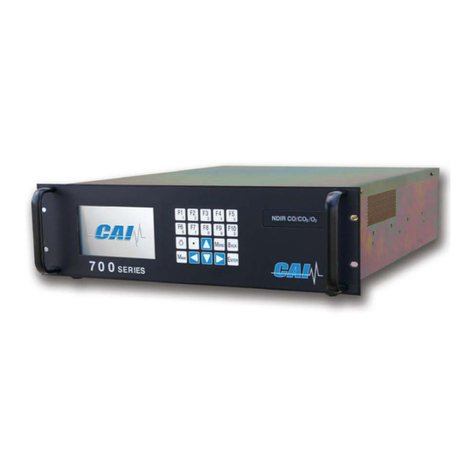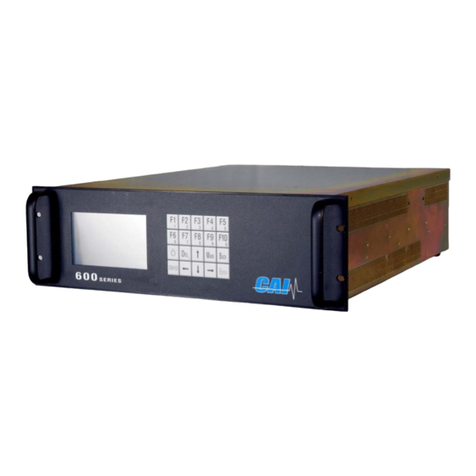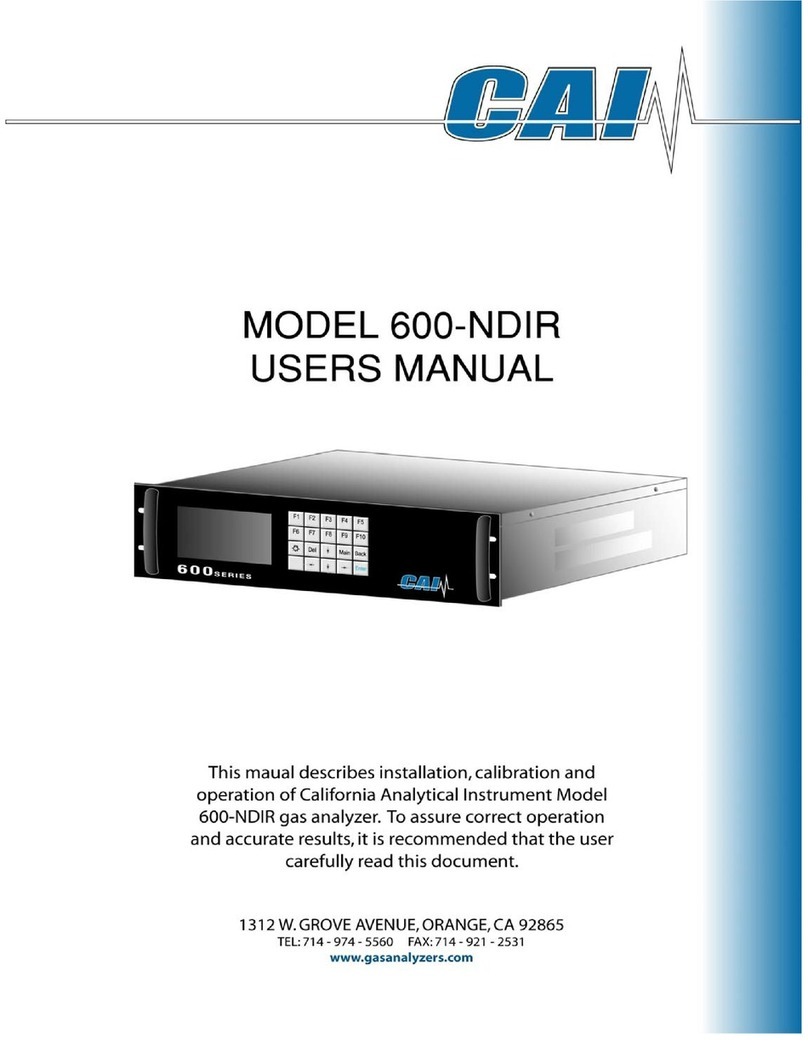
Section 1 INTRODUCTION
California Analytical Model 600 CLD C_ETL_US/CE Operators Manual
Rev12 Page 2 of 81
1.5. Warranty Certificate
Subject to the exceptions and upon the conditions stated below, California Analytical
Instruments (CAI) warrants that the products sold under this sales order shall be free
from defects in workmanship and materials for one year after delivery of the product to
the original Buyer by CAI and if any such product should prove to be defective within
such one year period, CAI agrees, at its option, either (i) to correct by repair or, at CAI’s
election, by replacement with equivalent product any such defective product, provided
that investigation and factory inspection discloses that such defect developed under
normal and proper uses, or (ii) to refund the purchase price. The exceptions and
conditions mentioned above are as follows:
a) components or accessories manufactured by CAI which by their nature are not intended to
and will not function for one year are warranted only to give reasonable service for a
reasonable time; which constitutes reasonable time and reasonable services shall be
determined solely by CAl. A complete list of such components and accessories is maintained
at the factory;
b) CAI makes no warranty with respect to components or accessories not manufactured by it; in
the event of defect in any such component or accessory CAI will give reasonable assistance
to Buyer in obtaining from the respective manufacturer whatever adjustment is authorized by
the manufacturer’s warranty;
c) any product claimed to be defective must be returned to the factory transportation charges
prepaid and CAI will return the repaired or replaced product freight collect;
d) if the product claimed to be defective requires on-site repair, such warranty labor will be
provided at no charge; however, transportation and living expenses will be charged to Buyer;
e) if the product is a consumable or the like, it is warranted only to conform to the quantity and
content and for the period (but not in excess of one year) stated on the label at the time of
delivery or 90 days;
f) CAI may from time to time provide a special printed warranty with respect to a certain product,
and where applicable, such warranty shall be deemed incorporated herein by reference;
g) CAI shall be released from all obligations under all warranties, either expressed or implied, if
any product covered hereby is repaired or modified by persons other than its own authorized
service personnel unless such repair by others is made with the written consent of CAl.
IT IS EXPRESSLY AGREED THAT THE ABOVE WARRANTY SHALL BE IN LIEU OF ALL
WARRANTIES OF FITNESS AND OF THE WARRANTY OF MERCHANTABILITY AND THAT
CAI SHALL HAVE NO LIABILITY FOR SPECIAL OR CONSEQUENTIAL DAMAGES OF ANY
KIND OR FROM ANY CAUSE WHATSOEVER ARISING OUT OF THE MANUFACTURE USE,
SALE, HANDLING, REPAIR, MAINTENANCE OR REPLACEMENT OF ANY OF THE
PRODUCTS SOLD UNDER THIS SALES ORDER. SOME STATES DO NOT ALLOW THE
EXCLUSION OR LIMITATION OF INCIDENTAL OR CONSEQUENTIAL DAMAGES, SO THAT
THE ABOVE LIMITATIONS OR EXCLUSIONS MAY NOT APPLY. THIS WARRANTY GIVES
YOU SPECIFIC LEGAL RIGHTS, AND YOU MAY ALSO HAVE OTHER RIGHTS, WHICH VARY
FROM STATE TO STATE.
Representations and warranties made by any person, including dealers and representatives of
CAI, which are inconsistent, or in conflict with the terms of this warranty, shall not be binding upon
CAI unless reduced to writing and approved by an expressly authorized officer of CAl.
































